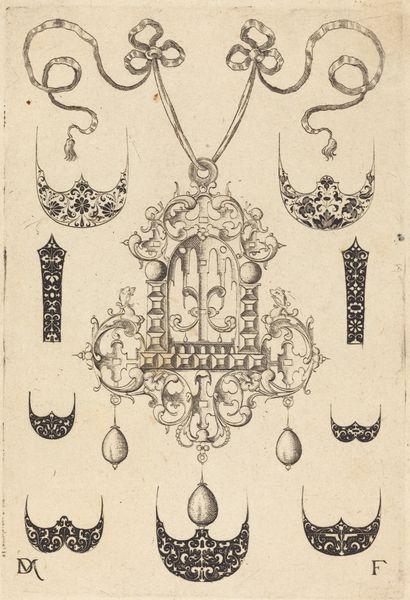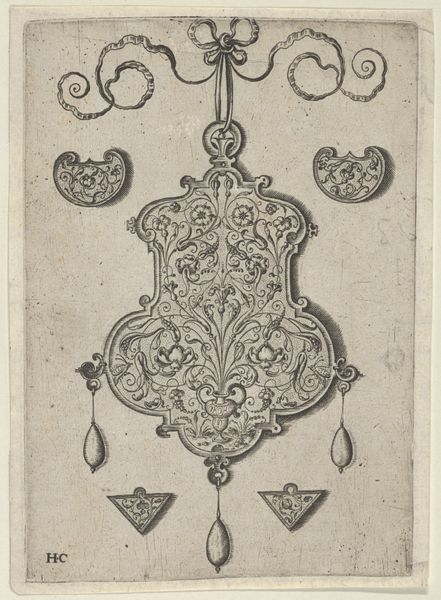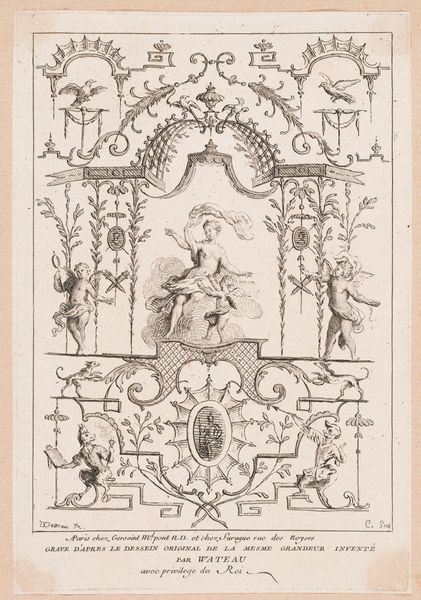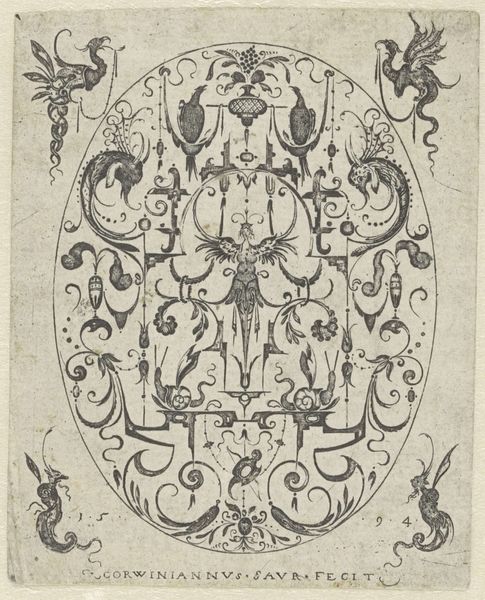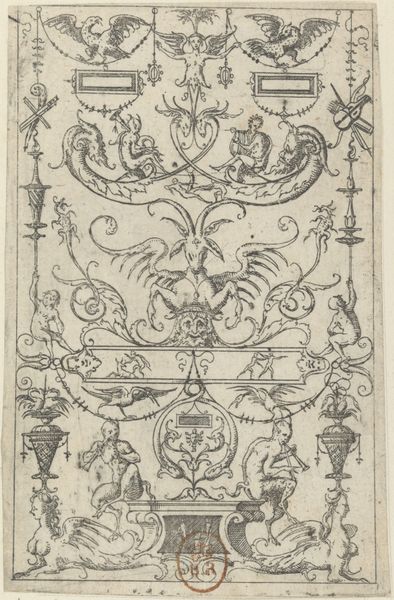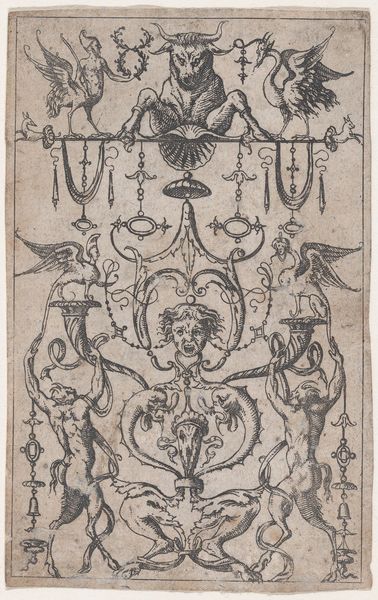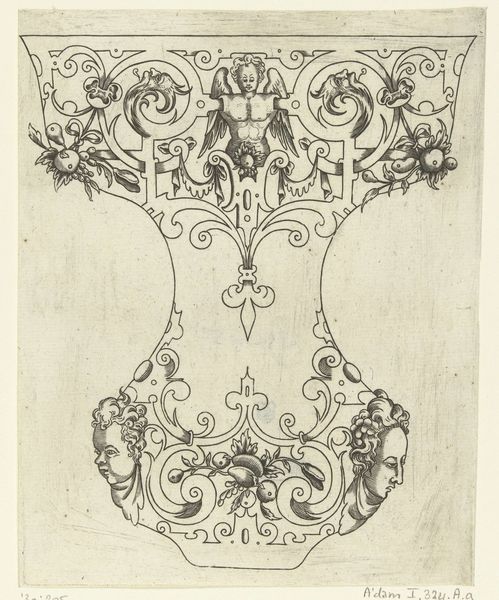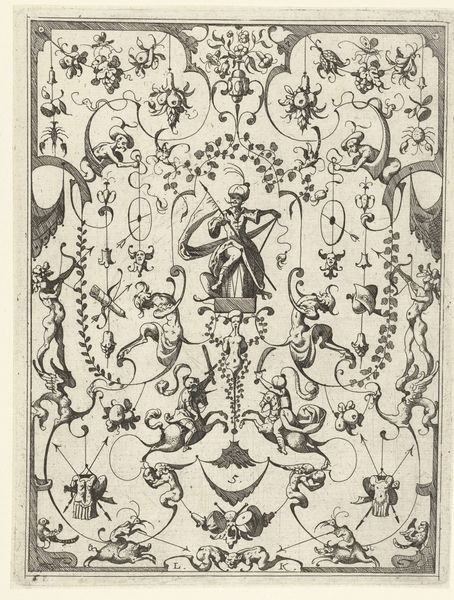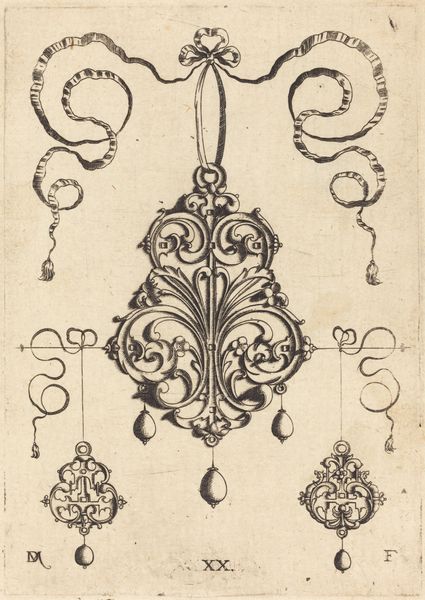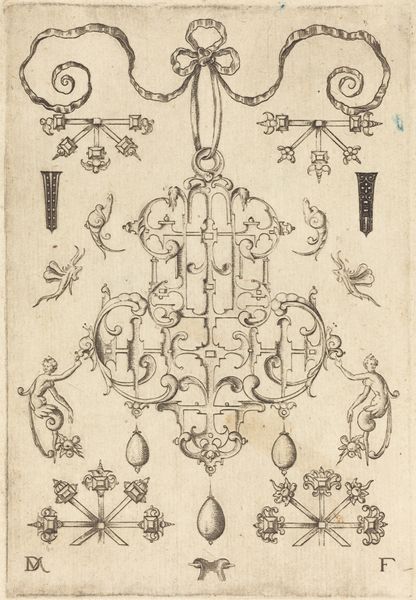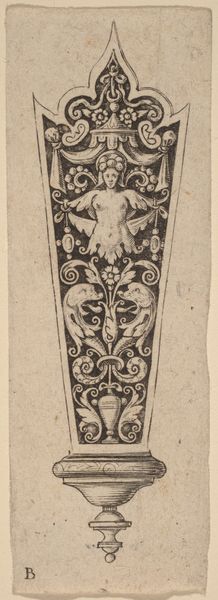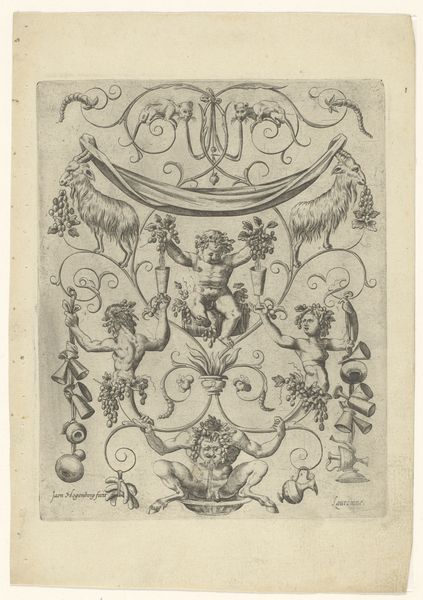
Dimensions: 4 7/16 x 2 7/16 in. (11.27 x 6.19 cm) (image, sheet)4 5/8 x 2 1/2 in. (11.75 x 6.35 cm) (sheet, each)
Copyright: Public Domain
Curator: Immediately, there's something pleasing about this image: it’s balanced, decorative… a visual rhythm I find quite captivating. Editor: We are looking at Claude Burdel's "Three of Cups," an engraving and etching print from 1751, now held at the Minneapolis Institute of Art. Let's delve into its layered meanings, bearing in mind its birth during the rise of mercantile power, colonial expansion and evolving class structures. Curator: Before context, the geometry is striking! The cups themselves create strong verticals. The lines of the engraving emphasize the curves of each vessel. Even the stylized floral arrangements seem to mimic the cup shapes. The color palette—a simple combination of warm yellows and oranges with cool blues—is simple but impactful. Editor: The three cups immediately call to mind rituals of toasting and communal celebrations – perhaps as markers for class identity and nascent capitalist success. One can only wonder who could have possessed it. Was it circulated in aristocratic circles, where tarot and similar symbolic systems functioned as expressions of lineage and the cultivation of aesthetic taste? Curator: It makes one want to diagram all its individual formal components! Look closely, and you'll find all forms work harmoniously as the warm colors dominate to offer a clear sense of hierarchy. Even if we take it only at its surface, this speaks of highly refined visual organization! Editor: Absolutely, but a close reading allows us to consider that design. While Baroque as an art style flourished across the Global South as tools to enforce Catholic ideals, this more constrained iteration and symbolism represents secular celebrations of merchant and ruling classes! The color choices were also important political signals for self-expression. How might its accessibility to the bourgeoisie influenced ideas around national culture during that pivotal moment? Curator: I see your point. Even this seeming formalism does contain some level of implicit social intention behind the simple forms! In any case, what has grabbed my attention throughout is how visually pleasing that formal unity seems. Editor: And that symmetry leads to powerful reflections upon shifting class dynamics, right at a cultural breaking point we must keep studying, always, through all intersectional prisms available to us. It will certainly yield even more valuable historical and political understandings.
Comments
No comments
Be the first to comment and join the conversation on the ultimate creative platform.
